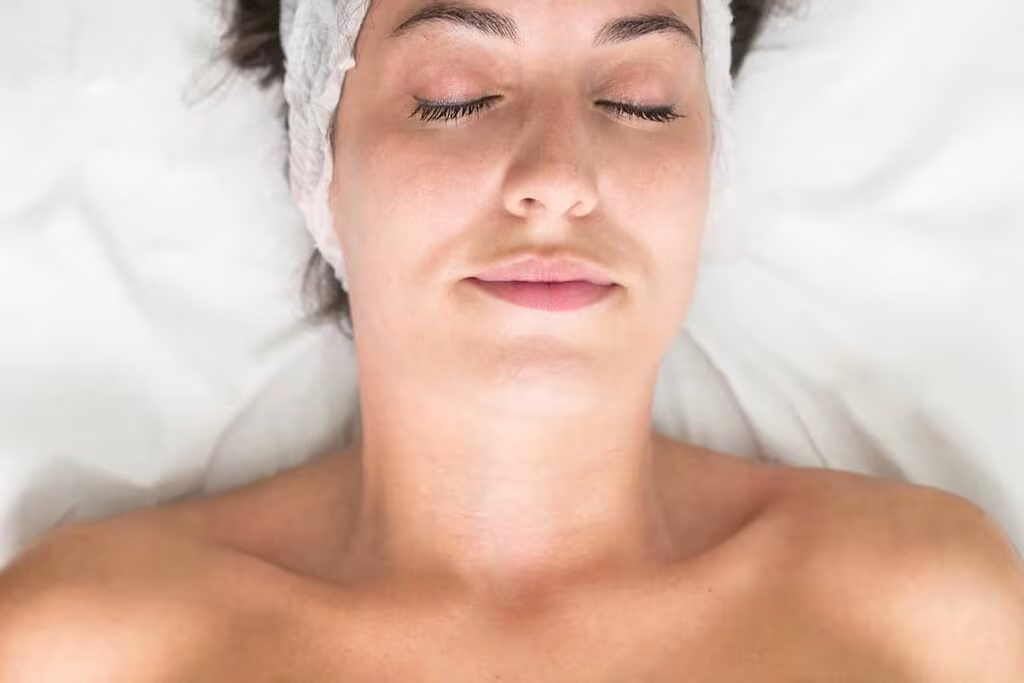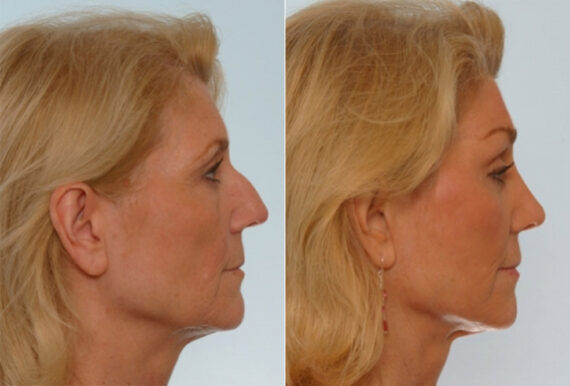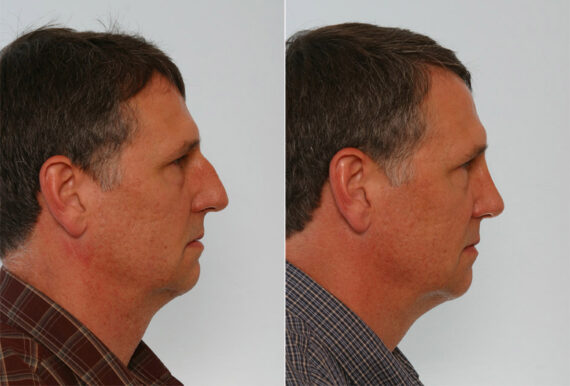Whether you’re contemplating rhinoplasty, are in the midst of your recovery, or are supporting someone through their journey, this blog will serve as your trusted companion, offering a breakdown of what to expect, helpful tips, and the emotional considerations that accompany this life-changing experience. Join us as we delve into the intricacies of rhinoplasty recovery, empowering you with knowledge and confidence every step of the way.

The Importance of Recovery in Nose Job Procedures
Recovery is an integral part of the rhinoplasty surgery process. The rhinoplasty recovery period varies from patient to patient, influenced by factors like skin thickness, the extent of the surgical procedure, and individual healing abilities. Understanding and following the rhinoplasty recovery timeline is essential for the best outcome. It’s not just about the days after surgery but about knowing what each day in rhinoplasty recovery entails.
Preparing for Rhinoplasty Recovery: What to Expect
Immediate Post-Surgery Care
Immediately after the rhinoplasty procedure, patients will experience some common symptoms. Swelling, bruising, and discomfort are typical in the first couple of days. Your rhinoplasty surgeon will likely prescribe pain medication to manage discomfort and recommend an elevated position while resting to improve blood circulation and reduce swelling.
Setting Up Your Recovery Space
Before the day nose job recovery begins, it’s vital to prepare your recovery space with potential accommodations for comfort and convenience. Keep essential items like pain medication, cold compresses, and saline nasal spray within easy reach. Creating a calm and comfortable environment aids in reducing stress, which can benefit the healing process.
Rhinoplasty Recovery Day by Day: The First 24 Hours
Immediate After-Effects and Care Tips
The first 24 hours after a rhinoplasty surgery are crucial and typically the most challenging part of the recovery process. Patients often wake up with nasal packing to control bleeding, leading to the feeling of nasal swelling and an inability to breathe through the nose. It’s common to experience discomfort, and the face may feel puffy. The plastic surgeon will provide pain medication to alleviate discomfort, and it’s important to take these exactly as prescribed. Patients are advised to rest in an elevated position, which not only helps in reducing swelling but also aids in better blood circulation, crucial for the healing process. The use of a cold compress around the nose, without direct application, can also provide relief from swelling and discomfort.
The immediate period following the rhinoplasty procedure requires careful attention to avoid any strain on the nose. It is advisable to limit physical activity, including bending or lifting, as these actions can increase blood pressure and lead to bleeding or increased swelling. Keeping the head elevated above the chest level, even when sleeping, is a key aspect of care during this period. This phase also requires avoiding any actions that might put pressure on the nasal passages, such as blowing the nose. Patients are encouraged to breathe through the mouth and use a humidifier if needed to keep the air moist, aiding in comfort and healing. These steps, although seemingly basic, play a pivotal role in ensuring a smooth and effective start to the recovery from rhinoplasty.
Navigating the First Week: Rhinoplasty Recovery Day 7
Daily Changes and Healing Process
In the initial week following rhinoplasty surgery, each day is pivotal for healing. Swelling and bruising gradually lessen, although still noticeable. This period is critical; the body heals and adapts to the changes from the surgery. Patients should prioritize rest, avoid strenuous activity, and rigorously follow post-operative instructions to influence the surgery’s success positively.
Common Symptoms and How to Manage Them
The first week often includes swelling, bruising, and discomfort. Managing these symptoms is key to a comfortable recovery. Cold compresses, applied cautiously to avoid pressure on the nose, and prescribed pain medication can alleviate discomfort. Elevating the head during sleep also helps reduce swelling and ease breathing, as patients might experience difficulty due to swollen nasal passages.
Rhinoplasty Recovery Timeline: Week 2 and Beyond
Noticeable Milestones in Healing
As patients move into the second week of their rhinoplasty recovery, they’ll notice a significant reduction in swelling and bruising. This phase is crucial for observing the gradual changes and refining the new nasal shape, especially in cases like ethnic rhinoplasty or functional rhinoplasty. It’s important for patients to continue monitoring their progress and maintain open communication with their plastic surgeon, as this period is critical for ensuring proper healing and achieving the desired outcomes.
Returning to Normal Activities
During this stage of the rhinoplasty recovery timeline, patients can start resuming some normal activities, with caution. Strenuous activity and high-impact sports should still be avoided to protect the delicate nasal tissues. The focus should be on gentle reintegration into daily routines, ensuring that any physical exertion does not compromise the healing process. Regular follow-up appointments with the surgeon are essential during this time to monitor the healing and provide personalized guidance for each patient’s recovery journey.
Tips on Recovery: Managing Pain and Swelling
Pain and swelling are two of the most common challenges faced during the rhinoplasty recovery process. Proper management of these symptoms is crucial for a comfortable and efficient healing journey.
Effective Pain Management Strategies
Understanding Pain After Rhinoplasty
Post-rhinoplasty pain varies among patients, but it’s usually manageable. It’s important to follow the pain medication plan prescribed by your plastic surgeon. Over-the-counter medications might also be recommended, but patients should avoid any medication that could act as a blood thinner, as this can affect blood pressure and recovery.
Utilizing Prescribed Medication
Prescribed pain medication should be taken as directed. It’s important not to overuse or underuse these medications. If the pain feels excessive or if there are concerns about the medication, patients should consult their surgeon immediately.
Alternative Pain Relief Methods
In addition to medication, other methods can help in managing pain. Gentle relaxation techniques, such as deep breathing and listening to calming music, can aid in pain relief. However, any physical activity, even gentle stretching, should be avoided unless approved by the surgeon.
Reducing Swelling and Bruising
Cold Compress Application
Cold compresses can be very effective in reducing swelling and bruising. However, they should never be applied directly to the nose. Instead, apply them to adjacent areas like the cheeks or forehead. This indirect application helps in managing discomfort without putting pressure on the nose.
Keeping the Head Elevated
Maintaining an elevated position, particularly during sleep, is crucial in the first few days post-surgery. This position aids in reducing swelling and improves blood circulation, speeding up the healing process.

Limiting Physical Activity
Patients should limit physical activity, especially strenuous activity, to reduce the risk of increased swelling or bleeding. Activities that increase heart rate or blood pressure should be avoided in the initial phase of recovery.
Dietary Considerations
Certain foods and beverages can exacerbate swelling. Patients should avoid salty foods, alcohol, and caffeine, as they can contribute to fluid retention. Instead, focus on a balanced diet rich in fruits, vegetables, and proteins to support the body’s healing process.
Staying Hydrated
Adequate hydration is essential for reducing swelling. Drinking plenty of water helps maintain proper blood flow and body temperature, facilitating a smoother recovery.
Nutrition and Lifestyle During Rhinoplasty Recovery
Foods to Eat and Avoid
Nutrition plays a critical role in the healing process. Eating healthy foods, especially those rich in vitamins and protein, can aid in faster recovery. Patients should opt for soft, chewable food in the first few days to avoid exerting pressure on the nose. Staying hydrated is also essential.
The Role of Hydration and Rest
Adequate rest is vital for complete healing. The body repairs itself during sleep, and ensuring enough quality rest can significantly impact the speed and quality of the recovery process. Hydration aids in maintaining body temperature and blood flow, further facilitating healing.
Follow-up Care and Long-term Healing
Scheduled Check-ups and Expectations
Regular follow-up appointments with the rhinoplasty surgeon are crucial to monitor the healing process and address any concerns. These appointments provide an opportunity for the surgeon to assess the progress and advise on any additional steps or precautions.
Recognizing Signs of Complications
While complications are rare, it’s important to be aware of signs such as excessive bleeding, infection, or persistent swelling. Patients should contact their surgeon immediately if they notice any unusual symptoms.
The Emotional Journey of Rhinoplasty Recovery
Coping with Temporary Physical Changes
The emotional aspect of recovery is as important as the physical. It’s common to feel a range of emotions, from excitement to anxiety, as the new nasal appearance begins to emerge. Support from friends, family, or a professional counselor can be beneficial.
Support Systems and Mental Health
Having a strong support system can greatly aid in the emotional recovery from rhinoplasty. Talking about feelings and concerns with loved ones or support groups can provide comfort and reassurance during this transformative journey.
Embracing Your New Look
Adjusting to Changes Post-Rhinoplasty
As the weeks pass, the final results of the rhinoplasty will become more apparent. It’s important for patients to have realistic expectations and understand that minor swelling can persist for several months.
Celebrating the End of Your Recovery Journey
Once fully recovered, patients can fully appreciate the results of their rhinoplasty. This milestone is a time for celebration and confidence in their new appearance, marking the end of a significant journey in personal transformation.
The journey of rhinoplasty recovery is unique for each individual. While the physical changes are evident, the emotional and psychological impacts are profound. By following the recommended rhinoplasty recovery tips and maintaining open communication with their rhinoplasty surgeon, patients can navigate this journey with confidence and ease.
Ready for rhinoplasty in Houston? Contact Dr. Vitenas for expert care and a personalized approach to your transformation. Schedule your consultation today!


